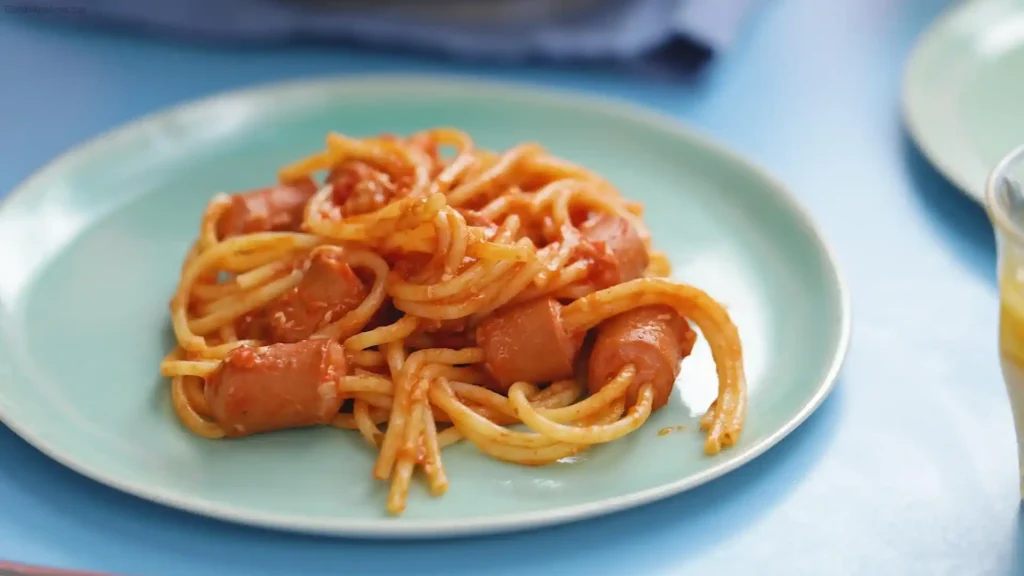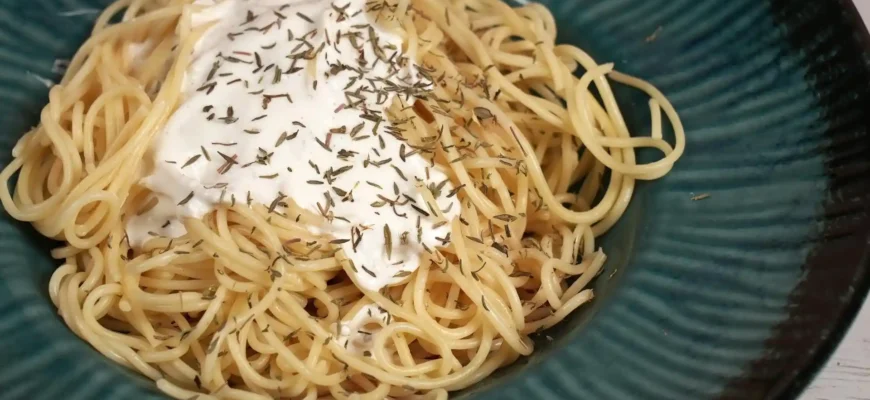If you’ve ever opened a jar of store-bought spaghetti sauce and wondered if there was something missing — well, you’re right. Homemade spaghetti sauce, or marinara sauce as it’s often called, not only elevates any pasta dish, but it can also bring a comforting, authentic flavor to your kitchen that you just can’t get from a factory-made jar. And the best part? It’s surprisingly easy to make and very customizable to suit your taste. Whether you’re looking for a classic tomato sauce, a richer, heartier variation, or a lighter, more herbal version, this guide will walk you through the entire process.
Let’s dive into it.
Ingredients: The Basics
A good spaghetti sauce starts with fresh, simple ingredients. You don’t need a kitchen full of exotic spices or obscure vegetables — just some quality tomatoes, fresh herbs, and a few basic pantry items. Here’s what you’ll need:
- Olive oil – 2 tablespoons (extra virgin is best, of course)
- Garlic – 4 cloves, minced (or more if you’re a garlic lover)
- Onion – 1 medium, finely chopped
- Crushed tomatoes – 1 can (28 ounces), or 8-10 ripe fresh tomatoes (blanched and peeled)
- Tomato paste – 1 small can (about 6 ounces)
- Dried oregano – 1 teaspoon
- Dried basil – 1 teaspoon
- Sugar – 1 teaspoon (optional, depending on the acidity of your tomatoes)
- Salt – To taste
- Black pepper – Freshly ground, to taste
- Fresh basil – A handful (optional, but highly recommended)
- Red pepper flakes – A pinch (optional, for a little heat)
Step 1: Prep Your Tomatoes
If you’re using fresh tomatoes, you’ll need to blanch them first (an easy process where you score an “X” on the bottom, briefly dip them in boiling water for about 30 seconds, and then transfer them to ice water). This allows you to easily peel off the skin. After peeling, chop them up, remove the seeds if you prefer, and you’re ready to go.
Alternatively, canned crushed tomatoes work perfectly here and save time. But if you’ve got some ripe tomatoes on hand, they’ll provide a lovely, fresh flavor that beats the can every time.
Step 2: Sauté the Aromatics
In a large pot, heat your olive oil over medium heat. Add the minced garlic and chopped onion. Sauté until the onion turns soft and translucent — about 5-7 minutes. Make sure not to burn the garlic; you want it fragrant, not bitter. This is the base of your sauce, and it’s where a lot of the flavor comes from, so don’t rush this step.
Step 3: Add the Tomatoes
Now that your onions and garlic are nicely sautéed, it’s time to add the tomatoes. Whether you’re using fresh or canned tomatoes, pour them in and stir well. Add the tomato paste at this point, which helps thicken the sauce and gives it that deep, rich tomato flavor.
Step 4: Season the Sauce
Next, stir in your dried oregano, basil, salt, pepper, and a pinch of red pepper flakes if you’re a fan of spice. Taste as you go and adjust the seasoning as needed. If the sauce is too acidic, a pinch of sugar can help balance it out. This is where you get to make the sauce truly your own.
Step 5: Simmer and Stir
Once everything is well combined, bring the sauce to a simmer. Reduce the heat to low and let it simmer gently for at least 30 minutes, but up to an hour if you have the time. The longer it simmers, the more the flavors develop, so don’t rush it. Stir occasionally to prevent it from sticking to the bottom.
Step 6: Add Fresh Basil (Optional)

About 10 minutes before you finish cooking, toss in a handful of fresh basil leaves. They’ll add a burst of freshness to the sauce that balances the deep, cooked flavors. You can also blend the sauce for a smoother texture, or leave it chunky if you like more texture.
Step 7: Taste and Adjust
The last step is always tasting. Give it one final stir and a taste test. Does it need more salt, pepper, or basil? If you like a bit of sweetness, you can also add a touch more sugar or even a splash of balsamic vinegar for a complex, tangy depth.
Troubleshooting Your Sauce: What to Do When Things Go Wrong
Even the best cooks can encounter issues when making sauce from scratch. Here are a few common problems and simple fixes:
- Too watery: If your sauce is too runny, simply simmer it for longer to evaporate the excess liquid. If you’re in a rush, you can also stir in a little more tomato paste or a spoonful of cornstarch (dissolved in water) to thicken it.
- Too acidic: Tomatoes can be acidic, especially if they’re not in season. A teaspoon of sugar or a splash of cream can help mellow the acidity.
- Too salty: If you over-salted, you can dilute the sauce with a little water or unsalted broth. If that doesn’t work, adding a few raw potato slices and simmering for 10 minutes can absorb some of the excess salt.
- Not flavorful enough: Let the sauce simmer longer. The more time it has to cook, the deeper the flavors will develop. You can also add a pinch of garlic powder or onion powder if the flavor needs boosting.
Variations on the Classic Spaghetti Sauce
Once you’ve mastered the basic spaghetti sauce recipe, feel free to experiment with variations:
- Meat Sauce: Brown some ground beef, pork, or turkey before adding the garlic and onions for a meaty, hearty sauce.
- Chunky Veggie Sauce: Add diced zucchini, bell peppers, or carrots to the base for a vegetable-packed version.
- Creamy Tomato Sauce: Stir in a little cream or butter at the end for a richer, creamier texture.
Conclusion: Why Make Your Own Sauce?
The beauty of making your own spaghetti sauce is that it’s an opportunity to customize. You get to control the ingredients, the seasonings, and the thickness. Plus, there’s something incredibly satisfying about creating a dish from scratch — it’s a labor of love that’s worth every minute.
And, let’s be honest, nothing compares to the smell of homemade sauce simmering on the stove. It’s pure comfort food that connects us to generations of cooks before us.
Opinions on Homemade Spaghetti Sauce:
- Alice (Age 55, USA): “I’ve been making spaghetti sauce from scratch for over 30 years, and I can honestly say, it beats anything from a jar. The secret is in the slow cooking. It really brings out the natural sweetness of the tomatoes. And fresh basil is a game changer!”
- Marco (Age 34, Italy): “As an Italian, I can say there’s no one-size-fits-all to marinara. It’s a family recipe, passed down and tweaked over time. I love a bit of garlic and anchovy in mine — it’s a traditional twist you don’t often see outside Italy.”
- Tanya (Age 62, UK): “I like to make my sauce ahead of time and freeze it for later. It always tastes better the next day, once the flavors have really had a chance to mingle. My grandkids love it, and that’s all that matters to me!”
- Javier (Age 41, Mexico): “I’m all about adding a little kick to my sauce. A dash of chipotle or some extra chili flakes can really make a difference. It’s about finding that perfect balance between heat and sweetness.”
- Priya (Age 28, India): “Being a vegetarian, I sometimes add a lot of veggies to my spaghetti sauce — carrots, spinach, mushrooms. I love how versatile the sauce is, and it’s a great way to sneak in some extra nutrition!”
So, there you have it! Whether you’re an experienced cook or just getting started, making spaghetti sauce from scratch is a rewarding, customizable experience. So, put down that jar and get cooking!









